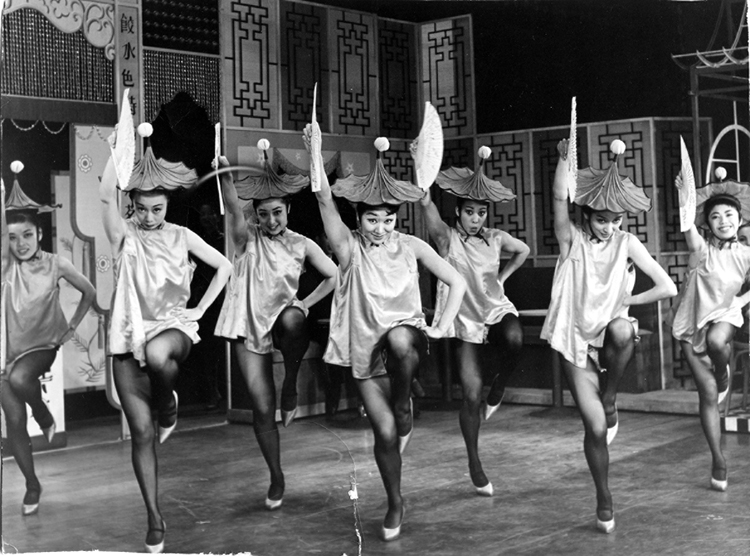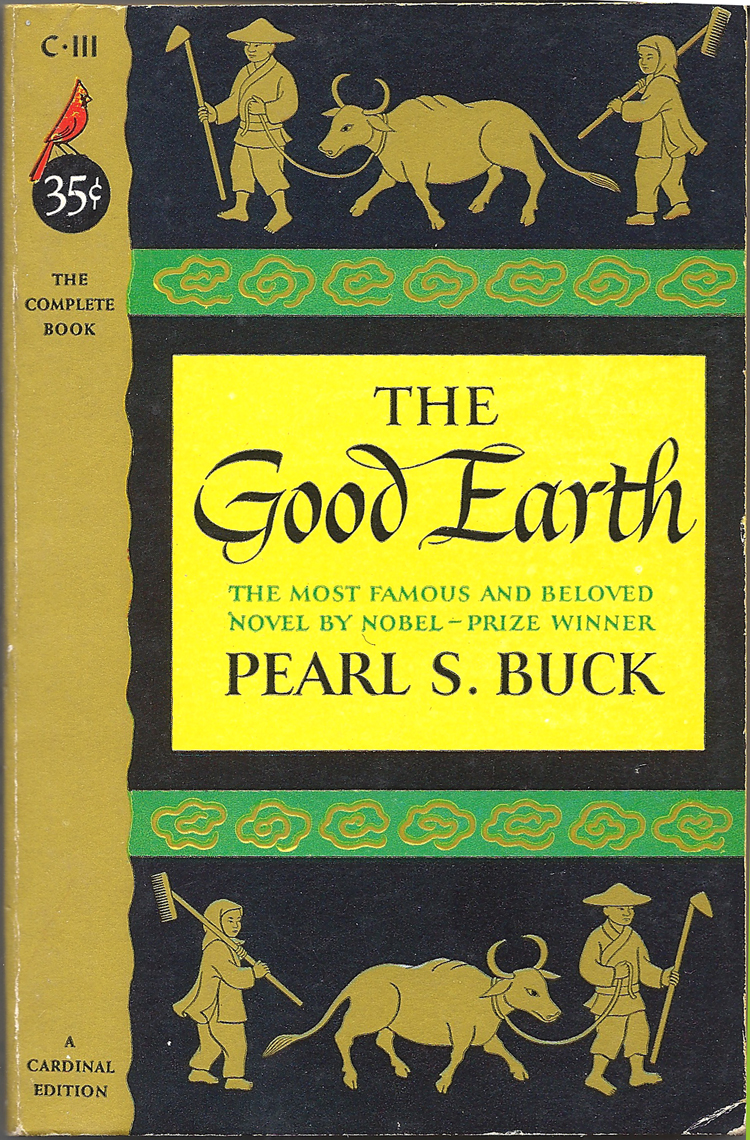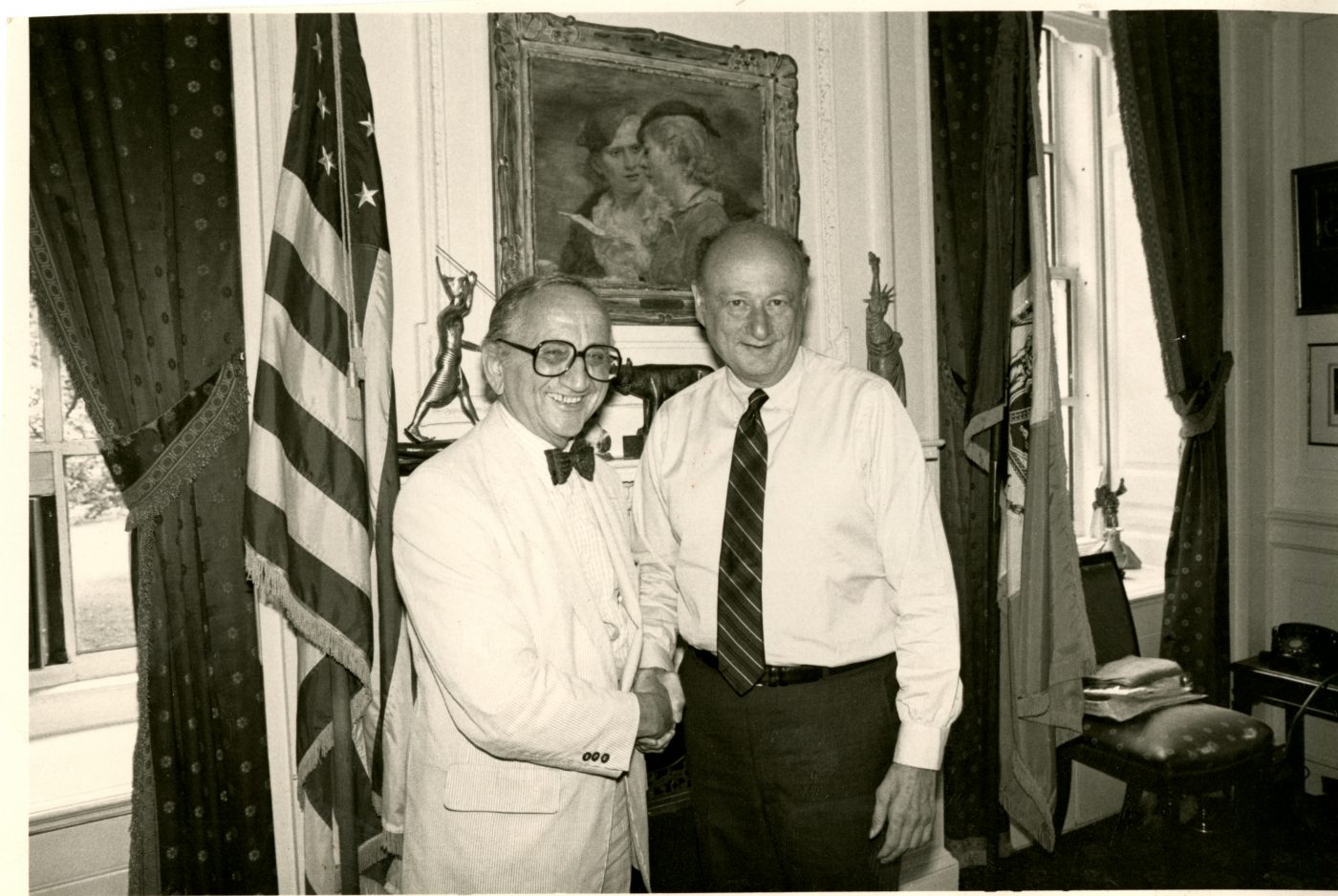Flower Drum Song was a Broadway musical directed by Rodgers and Hammerstein in 1958 based on a novel by C. Y. Lee. The choreography of the musical imitated the Chop Suey circuit, an Asian American cabaret thrived in Chinatowns in the 1940s and 1950s. Mae Wing (in the middle) performed as an ensemble dancer in this well-known musical when it first came out. After winning the “Miss Chinatown” in New York Chinese community, 17-year-old Mae was encouraged to try out for the show business by reluctantly against her parents’ wishes and achieved great success in the musical. She was also made “Miss Flower Drum,” official delegate to represent the theatrical troupe and continued in the role in conjunction with the release of the film version in 1961. Mae stayed with the show for three years, in New York and on the road, until starting her career in the dancing company of the Hawaiian Room in Lexington Hotel. The musical gave an opportunity to young Chinese American girls like Mae to have a better career as a dancer but also created an oriental visual landscape to reinforce the racial segregation of Asian women.
Collections馆藏Collections馆藏Collections馆藏Collections馆藏Collections馆藏Collections馆藏Collections馆藏Collections馆藏Collections馆藏Collections馆藏Collections馆藏Collections馆藏Collections馆藏Collections馆藏Collections馆藏Collections馆藏Collections馆藏Collections馆藏Collections馆藏Collections馆藏Collections馆藏Collections馆藏Collections馆藏Collections馆藏Collections馆藏Collections馆藏Collections馆藏Collections馆藏Collections馆藏Collections馆藏Collections馆藏Collections馆藏Collections馆藏Collections馆藏Collections馆藏Collections馆藏Collections馆藏Collections馆藏Collections馆藏Collections馆藏Collections馆藏Collections馆藏Collections馆藏Collections馆藏Collections馆藏Collections馆藏Collections馆藏Collections馆藏Collections馆藏Collections馆藏Collections馆藏Collections馆藏Collections馆藏Collections馆藏Collections馆藏Collections馆藏Collections馆藏Collections馆藏Collections馆藏Collections馆藏Collections馆藏Collections馆藏Collections馆藏Collections馆藏
Flower Drum Song and Mabel Wing

04 April 2019 Posted.
Flower Drum Song (Mae Wing in the middle). Courtesy of Mae Wong, Museum of Chinese in America (MOCA) Collection.
花鼓戏(Mae Wing,前中)。Mae Wong捐赠,美国华人博物馆(MOCA)馆藏

